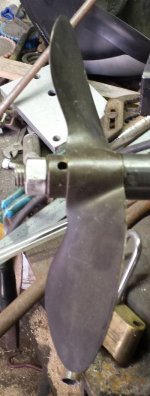yawstick said:
I dont know anything about the Torqeedo but my thinking is you would be hard pressed to improve on the efficiency/reliability of a package like that.
I think just the opposite. Torqeedo does a great job making their stuff look cool and futuristic, but what's inside doesn't impress me in the least. They use common outrunners as the motor with a planetary gear reduction and a built in controller. The much larger diameter tapered shell means they don't even have a good heat path for cooling. The little one has just a 52mm diameter outrunner, and in their literature they try sell it as big plus. Great look and great marketing gives them tremendous margins.
If there was ever a need for a brushless inrunner, an electric outboard is it. Then you can have the stator steel in direct contact with the shell for great heat transfer, and you could do the whole thing in a smaller diameter and reduce hydrodynamic drag compared to the Torqeedo. Personally, I'd want to eliminate the gear reduction to silence it, which will require quite a bit more motor weight, but imagine the power potential and reliability of a brushless inrunner with that kind of cooling and a size similar to common trolling motors.



